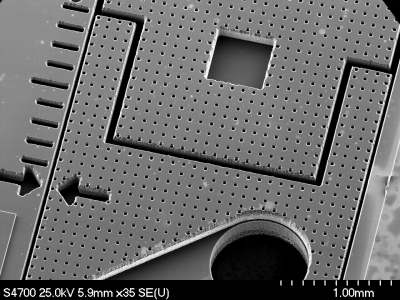There is a nice study on the subject I read a year ago:
Feasibility of In-car Wireless Sensor Networks: A Statistical Evaluation, by Tsai et al. for GM. I quote:
"... the communication channel between the base station and a sensor placed under the engine compartment is the worst in terms of stability, average fade duration, and fade proportion..."
Conclusion: you can get 98% packet transfer (that's a so-so number) and
500 ms (half a second) of delay, which rules out wireless control devices for the moment, because of the time lag, and limits the system to sensors.
Besides, there is a problem called "temporal correlation". If you have a random delay of 0.5 seconds AND there are some sensors that "work in parallel", like for example, the volume of air in the intake and the position of the throttle, you do not know if the measures from one of the sensors are "in step" with the other, or if the flow of air you measured was taken 0.5 seconds before you measured the throttle position. So, right now it's not a practical system for this kind of sensors.
On the other hand, please notice, dear Conceptual, that
these sensors are not simple replacements for current ones: there are places in a car where you cannot put a wired sensor. If, for example, you wish to put a sensor on top of a piston, you have to use a wireless one.
Another example: the US Air Force is working on what they call MEMS, which are miniaturized sensors that are being tested to sense the temperature at turbine bearings. The sensors are located inside the rotating bearing, ruling out a wired sensor or, at least, providing evident advantages if you use a wireless one.
Micro Electro-Mechanical System: it has ears and arms (the mechanical part) etched in silicon

The little sensors are fed electricity through an induction coil that picks a radio signal and convert it into electricity (more or less in the same way the supermarket "thief alarms" work). You have to energize them somehow:
if you have to use a wire to provide electricity for the sensor to work, what's the point of the communication wireless channel? Advanced wireless micro-sensors to prevent jet, spacecraft and car engine failures
I would say that the "concept" here is to substitute a direct system (like yourself watching something) by an indirect, relayed system with a noticeable delay (like yourself watching something through a network of people that reports back to you).
It seems a logical conclusion that you will "delegate" for a more efficient system: why do you have to report a sensor signal to a central computer and receive the control signal back?
It seems more logical to put ALL the intelligence in the sensor, so there is no need to report to the ECU. This is the XXIth century, for heavens sake. Are we using "mainframes" on purpose? I conclude that the whole concept of ECU is "wrong", or at least that it will be improved very quickly. I'd call it PECU, or personal ECU,

and it has occurred to me as I wrote this post, so probably it's just another one of my discardable ideas.
By "PECU" I mean that in the end, I imagine, you will have "personal" computers in each component that, by themselves, sense what's happening and take the appropriate action (like yourself having employees that take decissions independently to watch the "something" I mentioned). They can even store in themselves or directly transmit the info for FIA revision, and the wireless system will be limited to carry "general" control signals.
Let a hundred ECUs flourish! 



